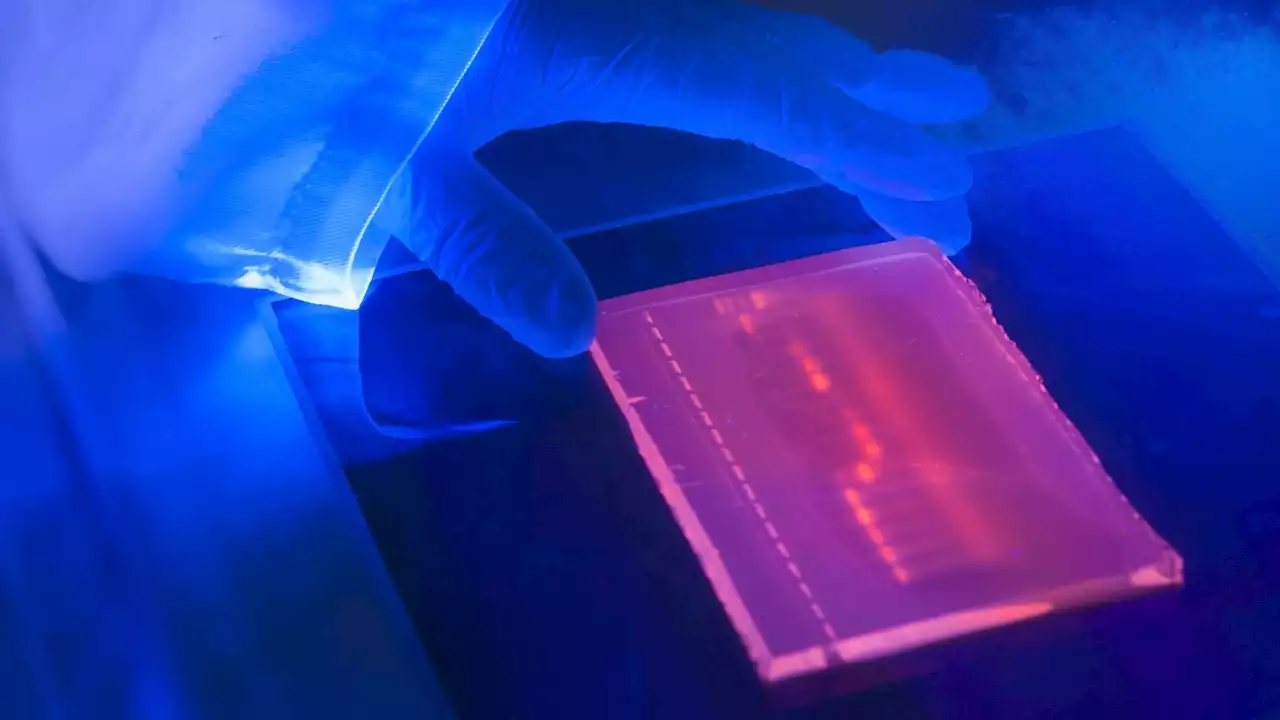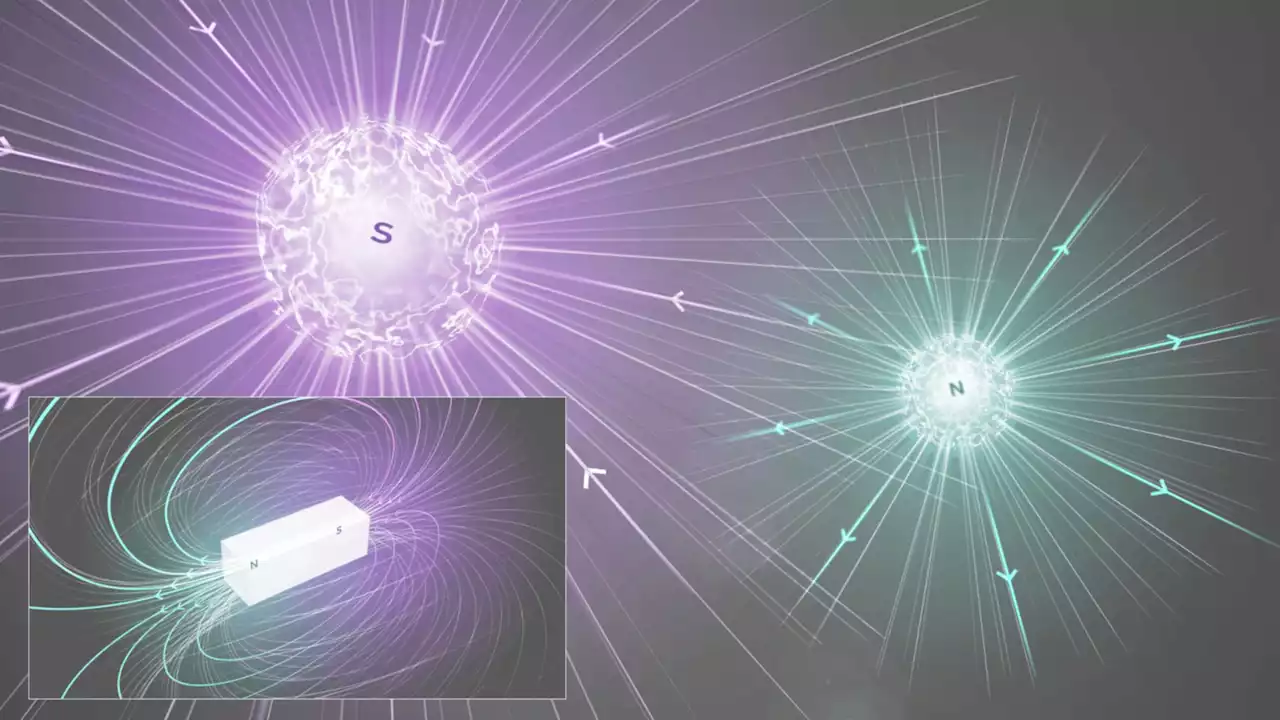Researchers discover excellent thermoelectric properties of nickel-gold alloys. These can be used to efficiently convert heat into electrical energy.
Thermoelectrics enable the direct conversion of heat into electrical energy -- and vice versa. This makes them interesting for a range of technological applications. In the search for thermoelectric materials with the best possible properties, a research team at TU Wien investigated various metallic alloys. A mixture of nickel and gold proved particularly promising. The researchers recently published their results in the journalUsing thermoelectrics to generate electricity is nothing new.
"Although Seebeck discovered the thermoelectric effect in common metals more than 200 years ago, nowadays metals are hardly considered as thermoelectric materials because they usually have a very low Seebeck coefficient," explains Fabian Garmroudi, first author of the study. On the one hand, metals such as copper, silver or gold have extremely high electrical conductivity; on the other hand, their Seebeck coefficient is vanishingly small in most cases.
The fact that the researchers were able to experimentally show that nickel-gold alloys are extremely good thermoelectrics is no coincidence."Even before starting our experimental work, we calculated with theoretical models which alloys were most suitable," reveals Michael Parzer. Currently, the group is also investigating other promising candidates that do not require the expensive element gold.
South Africa Latest News, South Africa Headlines
Similar News:You can also read news stories similar to this one that we have collected from other news sources.
 Brain inspires more robust AI | ScienceDailyMost artificially intelligent systems are based on neural networks, algorithms inspired by biological neurons found in the brain. These networks can consist of multiple layers, with inputs coming in one side and outputs going out of the other. The outputs can be used to make automatic decisions, for example, in driverless cars. Attacks to mislead a neural network can involve exploiting vulnerabilities in the input layers, but typically only the initial input layer is considered when engineering a defense. For the first time, researchers augmented a neural network's inner layers with a process involving random noise to improve its resilience.
Brain inspires more robust AI | ScienceDailyMost artificially intelligent systems are based on neural networks, algorithms inspired by biological neurons found in the brain. These networks can consist of multiple layers, with inputs coming in one side and outputs going out of the other. The outputs can be used to make automatic decisions, for example, in driverless cars. Attacks to mislead a neural network can involve exploiting vulnerabilities in the input layers, but typically only the initial input layer is considered when engineering a defense. For the first time, researchers augmented a neural network's inner layers with a process involving random noise to improve its resilience.
Read more »
 Weapons Technology News -- ScienceDailyRead the latest developments in non-lethal weapons, weapons of mass destruction (WMD), nuclear weapons, chemical weaponry and more.
Weapons Technology News -- ScienceDailyRead the latest developments in non-lethal weapons, weapons of mass destruction (WMD), nuclear weapons, chemical weaponry and more.
Read more »
 Researchers Discover Surprising Side Effect of Common Diabetes DrugDiabetes might not be the first thing that comes to mind when considering muscle function. However, a widely used diabetes drug that controls blood sugar can also prevent muscle atrophy and muscular fibrosis—which can help the elderly bounce back faster from injury or illness. Researchers from th
Researchers Discover Surprising Side Effect of Common Diabetes DrugDiabetes might not be the first thing that comes to mind when considering muscle function. However, a widely used diabetes drug that controls blood sugar can also prevent muscle atrophy and muscular fibrosis—which can help the elderly bounce back faster from injury or illness. Researchers from th
Read more »
 Researchers develop a novel method to generate deep-UV lightThis device can generate deep-UV light with a very narrow wavelength range that is safe for humans but lethal for germs.
Researchers develop a novel method to generate deep-UV lightThis device can generate deep-UV light with a very narrow wavelength range that is safe for humans but lethal for germs.
Read more »
 CERN researchers continue to look for elusive monopolesMagnetic monopoles are consistent with quantum mechanics and are called 'as one of the safest bets that one can make about physics not yet seen.”
CERN researchers continue to look for elusive monopolesMagnetic monopoles are consistent with quantum mechanics and are called 'as one of the safest bets that one can make about physics not yet seen.”
Read more »
 In major breakthrough, researchers close in on potential preeclampsia cureResearchers have achieved a significant breakthrough in identifying the primary cause and potential treatment for preeclampsia, a severe pregnancy complication. Experts pinpointed a toxic protein named cis P-tau in the blood and placenta of individuals with preeclampsia. The study describes cis P-tau as a pivotal circulating instigator of preeclampsia. An antibody developed in 2012 to target only the toxic protein while leaving its healthy counterpart unscathed is currently undergoing clinical trials in human patients suffering from traumatic brain injury and Alzheimer's Disease. The antibody has shown promising results in animal models and human cell cultures in treating the brain conditions. Upon testing this antibody in mice, the researchers found the all symptoms associated with preeclampsia were corrected.
In major breakthrough, researchers close in on potential preeclampsia cureResearchers have achieved a significant breakthrough in identifying the primary cause and potential treatment for preeclampsia, a severe pregnancy complication. Experts pinpointed a toxic protein named cis P-tau in the blood and placenta of individuals with preeclampsia. The study describes cis P-tau as a pivotal circulating instigator of preeclampsia. An antibody developed in 2012 to target only the toxic protein while leaving its healthy counterpart unscathed is currently undergoing clinical trials in human patients suffering from traumatic brain injury and Alzheimer's Disease. The antibody has shown promising results in animal models and human cell cultures in treating the brain conditions. Upon testing this antibody in mice, the researchers found the all symptoms associated with preeclampsia were corrected.
Read more »
